Home>Storage Ideas>Kitchen Storage>Should A Kitchen Floor Be Lighter Or Darker Than Cabinets?
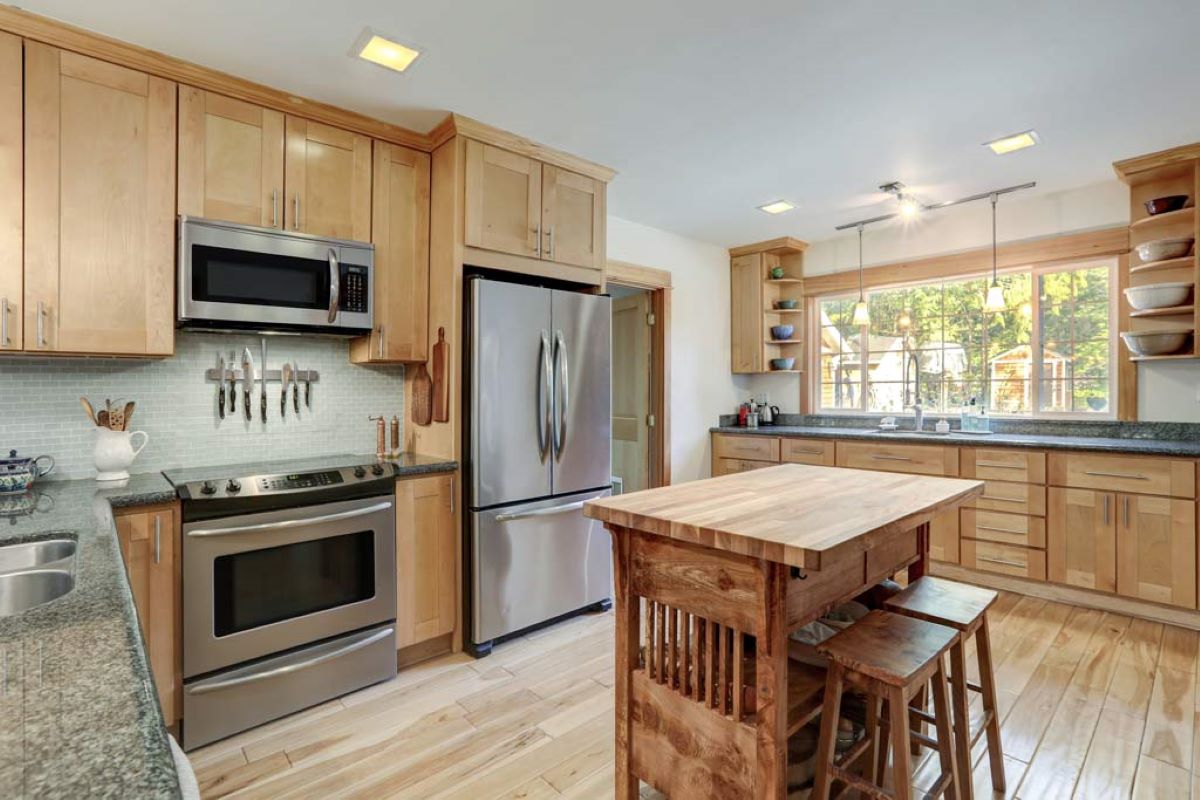

Kitchen Storage
Should A Kitchen Floor Be Lighter Or Darker Than Cabinets?
Modified: October 19, 2024
Find the perfect balance for your kitchen with our kitchen storage ideas. Discover whether a lighter or darker floor complements your cabinets best.
(Many of the links in this article redirect to a specific reviewed product. Your purchase of these products through affiliate links helps to generate commission for Storables.com, at no extra cost. Learn more)
Introduction
When it comes to designing a kitchen, choosing the right color scheme is crucial in creating a harmonious and visually appealing space. One important decision to make is whether the kitchen floor should be lighter or darker than the cabinets. This choice can significantly impact the overall look and feel of the kitchen, so it’s essential to make an informed decision.
Coordinating the color of the kitchen floor with the cabinets is essential because it creates a cohesive and balanced aesthetic. When these elements work harmoniously together, it can enhance the overall design and make the kitchen more visually pleasing. Additionally, the color of the kitchen floor can influence the perceived size and brightness of the space. Therefore, understanding the factors involved is key to achieving the desired outcome.
There are several factors to consider when deciding whether the kitchen floor should be lighter or darker than the cabinets. Each option has its advantages and can be tailored to suit different design preferences and individual needs. By understanding the benefits of lighter and darker floors, you can make an informed decision that aligns with your vision for your kitchen.
Key Takeaways:
- Lighter kitchen floors enhance brightness, create a sense of openness, and offer versatility in design, making them ideal for smaller kitchens and a clean, refreshing aesthetic.
- Darker kitchen floors bring depth, warmth, and sophistication, creating an intimate ambiance and visually striking contrast with lighter elements, perfect for a cozy and elegant atmosphere.
Importance of Coordinating Kitchen Floor and Cabinet Colors
Coordinating the colors of the kitchen floor and cabinets is vital for creating a visually cohesive and harmonious space. When these elements are carefully chosen to complement each other, it can elevate the overall design and create a sense of unity in the kitchen. Here are a few reasons why coordinating the colors of the kitchen floor and cabinets is so important:
1. Aesthetic Appeal: When the colors of the floor and cabinets match or complement each other, it creates a visually pleasing and cohesive look. It gives the kitchen a sense of balance, harmony, and sophistication. Whether you prefer a modern, minimalist, or rustic style, coordinating the colors of these two essential elements will help achieve the desired aesthetic.
2. Flow and Continuity: Coordinating the colors of the kitchen floor and cabinets helps establish a sense of flow and continuity in the space. When the shades and tones align or complement each other, it creates a seamless transition between the different components of the kitchen. This visual continuity makes the kitchen feel more spacious and connected.
3. Enhancing or Balancing the Space: The color of the kitchen floor can influence the perceived size and brightness of the space. A lighter floor can make a small kitchen appear more open and spacious, while a darker floor can add warmth and coziness to a large kitchen. By coordinating the floor and cabinet colors, you can enhance or balance the visual impact of the kitchen, depending on your preferences and the overall design goals.
4. Personal Style and Expression: Your choice of floor and cabinet colors allows you to express your personal style and create a kitchen that reflects your taste. Coordinating these colors ensures that your design choices are intentional and thoughtfully executed. Whether you opt for a monochromatic look or a contrasting color scheme, coordinating the floor and cabinet colors allows you to create a kitchen space that feels uniquely yours.
By understanding the importance of coordinating the colors of the kitchen floor and cabinets, you can approach the design process with a clear vision and make informed choices that will enhance the overall aesthetic and functionality of your kitchen.
Factors to Consider When Choosing the Color of the Kitchen Floor
Choosing the right color for your kitchen floor is a crucial decision that can significantly impact the overall look and feel of the space. To ensure a cohesive and well-designed kitchen, consider the following factors when selecting the color of your kitchen floor:
1. Cabinets and Countertop Colors: The color of your kitchen cabinets and countertops will be a critical factor in determining the appropriate color for the floor. Consider whether you want a monochromatic look with matching colors or a contrasting color scheme. For example, if your cabinets are dark, a light-colored floor can create a striking contrast, while a similar shade can create a more unified look.
2. Natural Light: Take into account the amount of natural light in your kitchen. If your kitchen receives an abundance of natural light, you have more flexibility in choosing darker or lighter floor colors. However, if your kitchen is low on natural light, opting for lighter floor colors can help brighten up the space and create a sense of openness.
3. Size of the Kitchen: Consider the size of your kitchen when selecting floor colors. Lighter colors tend to make small kitchens appear larger and more spacious, while darker colors can add depth and coziness to larger kitchens. Assess the dimensions of your kitchen and determine whether you want to enhance its size or create a more intimate atmosphere.
4. Overall Design Theme: Think about the design theme or style you want to achieve in your kitchen. Different colors can evoke different moods and aesthetics. For a modern and sleek look, consider neutral colors like whites, grays, or light beiges. If you’re aiming for a rustic or traditional feel, warmer tones like browns and earthy hues can be a good choice.
5. Practicality and Maintenance: Consider the practicality and maintenance needs of different floor colors. Light-colored floors may require more frequent cleaning to keep them looking pristine, as they can show dirt and stains more easily. On the other hand, darker floors may be more forgiving in terms of hiding dirt. Think about your lifestyle, daily traffic, and cleaning preferences when choosing the color of your kitchen floor.
By considering these factors, you can make an informed decision about the color of your kitchen floor. Remember that the goal is to create a visually pleasing and functional space that reflects your personal style and enhances the overall design of your kitchen.
Advantages of Lighter Kitchen Floors
Lighter kitchen floors can bring a range of benefits to your kitchen design. By choosing a light-colored floor, you can create a bright and airy space that offers several advantages. Here are some advantages of lighter kitchen floors:
1. Enhanced Brightness: Lighter floors reflect more natural and artificial light, which helps to enhance the overall brightness of the kitchen. This can make the space feel more open, inviting, and spacious. Whether your kitchen is large or small, a light floor can create a sense of airiness and make the room feel more expansive.
2. Amplified Color Contrast: Light floors provide a stark contrast with darker elements in the kitchen, such as cabinets and countertops. This contrast can create a visually interesting and dynamic look. The light floor acts as a canvas, allowing other elements to stand out and become focal points in the space. It can make your cabinets and countertops pop, adding depth and visual appeal to the overall design.
3. Timeless and Versatile: Light-colored floors often have a timeless appeal and can seamlessly blend with various design styles. They offer versatility and adaptability, accommodating different color schemes and design elements. Whether you prefer a contemporary, traditional, or transitional kitchen, a light floor can provide a neutral backdrop that complements any aesthetic.
4. Conceals Dust and Debris: Lighter floors are typically more forgiving when it comes to concealing dust, dirt, and crumbs. This makes cleaning and maintenance a bit easier, as you won’t have to worry about every speck of dirt being visible. Lighter floors can provide a more forgiving surface in high-traffic areas, especially if you have young children or pets.
5. Illusion of Space: Light-colored floors can create an illusion of a larger space. They reflect light, making the room feel brighter and more expansive. This is particularly beneficial for smaller kitchens that may be lacking in natural light or square footage. With a light floor, you can make the most of the available space and create a visually open and welcoming environment.
Overall, lighter kitchen floors offer numerous advantages in terms of brightness, versatility, and ease of maintenance. They can help create a visually appealing and functional kitchen space that suits your design preferences and lifestyle.
A kitchen floor should be slightly darker than the cabinets to create a visually appealing contrast. This will help to anchor the space and prevent the room from feeling too top-heavy.
Advantages of Darker Kitchen Floors
Darker kitchen floors can add depth, warmth, and a touch of elegance to your kitchen design. While light floors have their advantages, darker options offer unique benefits that might suit your style and preferences. Here are some advantages of darker kitchen floors:
1. Intimate Ambiance: Darker floors create a cozy and intimate atmosphere in the kitchen. The rich and deep tones can evoke a sense of warmth, making the space feel inviting and comfortable. If you enjoy a more intimate and welcoming atmosphere, a darker floor can help create that desired ambiance.
2. Luxury and Sophistication: Darker floors are often associated with luxury and sophistication. They can add an element of elegance and refinement to your kitchen, elevating the overall design. If you’re aiming for a high-end or upscale look, a darker floor can contribute to achieving that desired aesthetic.
3. Hides Stains and Wear: Darker floors are generally more forgiving when it comes to hiding stains, dirt, and wear and tear. This can be particularly beneficial in high-traffic areas or if you have children or pets. The darker color helps conceal imperfections, making the floor appear cleaner for longer periods without requiring frequent cleaning.
4. Highlighting Light-Colored Elements: Darker floors create a beautiful contrast with lighter-colored elements in the kitchen, such as cabinets or countertops. This contrast can draw attention to these elements and make them stand out as focal points. The darker floor acts as a grounding base, enhancing the visual impact of the lighter elements and creating a captivating look.
5. Versatility in Design: Darker floors can work well with various design styles and color schemes. They provide a versatile backdrop that allows for creativity and personalization. Whether you’re going for a contemporary, industrial, or traditional style, a darker floor can complement the overall aesthetic and add depth to the design.
While darker kitchen floors may require more maintenance in terms of cleaning and upkeep, the advantages of a warmer and more refined space may outweigh the extra effort. Consider the overall look and feel you want to achieve in your kitchen when deciding on whether to go for a darker floor.
Remember, the ultimate goal is to create a kitchen space that reflects your personal style and meets your functional requirements.
Popular Color Combinations for Kitchen Floors and Cabinets
When it comes to choosing the color combination for your kitchen floors and cabinets, there are several popular options that can elevate the overall design and create a visually appealing space. Here are some of the popular color combinations to consider:
1. Classic White and Light Gray: This timeless combination involves white cabinets paired with light gray floors. It creates a fresh and clean look, offering a bright and airy feel to the kitchen. This color combination works well in both traditional and modern design styles, providing a neutral and versatile backdrop for any accent colors or finishes you may want to incorporate.
2. Natural Wood Tones: Pairing natural wood cabinets with a complementary wood-tone floor creates a warm and inviting aesthetic. The combination of earthy hues and textures adds depth and character to the kitchen. This combination is particularly popular in farmhouse, rustic, or Scandinavian design styles, creating a cozy and nature-inspired ambiance.
3. Contrasting Black and White: Black and white is a classic and bold color combination that never goes out of style. Pairing white cabinets with black floors creates a striking contrast, making a bold design statement. This combination works well in modern, minimalist, or contemporary kitchens, providing a sleek and chic look.
4. Soft Neutrals: Combining soft neutral tones can create a soothing and elegant kitchen space. Light beige or taupe cabinets paired with a slightly darker floor in a similar shade creates a cohesive and sophisticated look. This color combination works well with various design styles and offers flexibility in adding pops of color or texture through accessories or decor items.
5. Bold and Vibrant: For those looking to make a statement, combining bold and vibrant colors for the cabinets and floors can create a unique and eye-catching kitchen design. Pairing rich blue cabinets with a lighter or contrasting floor color, such as white or light gray, can create a bold and contemporary look. This combination adds personality and adds a focal point to the kitchen.
Remember, when choosing your color combination, consider factors such as natural light, kitchen size, overall design theme, and personal taste. These popular combinations serve as inspiration, but feel free to customize and experiment with different colors to create a kitchen that reflects your style and personality.
Tips for Selecting the Right Color Scheme for Your Kitchen
Selecting the right color scheme for your kitchen is a crucial step in creating a visually appealing and harmonious space. Here are some tips to help you choose the perfect color scheme for your kitchen:
1. Consider Your Kitchen’s Style: Determine the overall style or theme you want to achieve in your kitchen. Are you aiming for a modern, farmhouse, or traditional look? Different color schemes work better with specific styles. For example, a monochromatic color scheme with shades of white and gray suits a modern kitchen, while warm wood tones complement a farmhouse style.
2. Assess Natural and Artificial Lighting: Take into account the amount of natural light your kitchen receives. Natural light can significantly affect the appearance of colors. If your kitchen has ample natural light, you can consider bolder or darker colors without making the space feel too heavy. In contrast, if your kitchen lacks natural light, opt for lighter colors to brighten up the space and create an airy feel.
3. Coordinate with Existing Elements: Look at the existing elements in your kitchen that are not changing, such as appliances, countertops, or backsplash. Ensure the color scheme you choose complements and coordinates well with these elements. This can help create a cohesive and seamless look in the kitchen.
4. Create Balance and Contrast: A well-balanced color scheme incorporates both complementary and contrasting colors. Think about the visual impact you want to create. For example, pairing light-colored cabinets with a darker floor can create a pleasing contrast. Additionally, adding pops of color through accessories or a statement piece can inject personality into the space.
5. Experiment with Samples: Before committing to a specific color scheme, obtain samples of the materials you plan to use, such as flooring and cabinet finishes. See how these samples look in your kitchen under different lighting conditions. This will give you a better idea of how the colors will appear in your space and help you make an informed decision.
6. Consider the Future: While current trends can be inspiring, think about longevity. Consider whether the color scheme you choose will still be appealing to you in the future. Neutral colors are more timeless and can provide greater flexibility if you decide to change other elements in your kitchen in the future.
7. Trust Your Instincts: Ultimately, trust your instincts and go with colors that resonate with you. Your kitchen should reflect your personal style and taste. If a color scheme makes you feel happy and comfortable, it’s likely the right choice for you.
By following these tips and taking into account your kitchen’s style, lighting, existing elements, balance, and personal preferences, you can select a color scheme that will create a beautiful and inviting kitchen space.
Conclusion
Selecting the right color scheme for your kitchen, particularly when it comes to coordinating the colors of the floor and cabinets, is crucial in creating a visually appealing and harmonious space. By considering factors such as the existing elements, natural light, overall style, and personal preferences, you can make an informed decision that will result in a kitchen that reflects your taste and enhances the overall design.
Lighter kitchen floors offer advantages such as enhanced brightness, amplified color contrast, and versatility in design. They can create a sense of openness and a clean, refreshing aesthetic. On the other hand, darker kitchen floors bring depth, warmth, and a touch of sophistication to the space. They can provide an intimate ambiance and create a visually striking contrast with lighter elements.
Popular color combinations for kitchen floors and cabinets include classic white and light gray, natural wood tones, contrasting black and white, soft neutrals, and bold and vibrant options. These combinations align with various design styles and can help you achieve the desired aesthetic in your kitchen.
When selecting the right color scheme, it is essential to consider your kitchen’s style, lighting conditions, existing elements, and the balance and contrast you want to incorporate. Experimenting with samples and trusting your instincts can also guide you in making the right decision.
In conclusion, choosing the right color scheme for your kitchen is a personal and creative process. By carefully considering the factors mentioned and infusing your own style and preferences, you can create a beautiful and functional kitchen that reflects your personality and makes a lasting impression.
Frequently Asked Questions about Should A Kitchen Floor Be Lighter Or Darker Than Cabinets?
Was this page helpful?
At Storables.com, we guarantee accurate and reliable information. Our content, validated by Expert Board Contributors, is crafted following stringent Editorial Policies. We're committed to providing you with well-researched, expert-backed insights for all your informational needs.
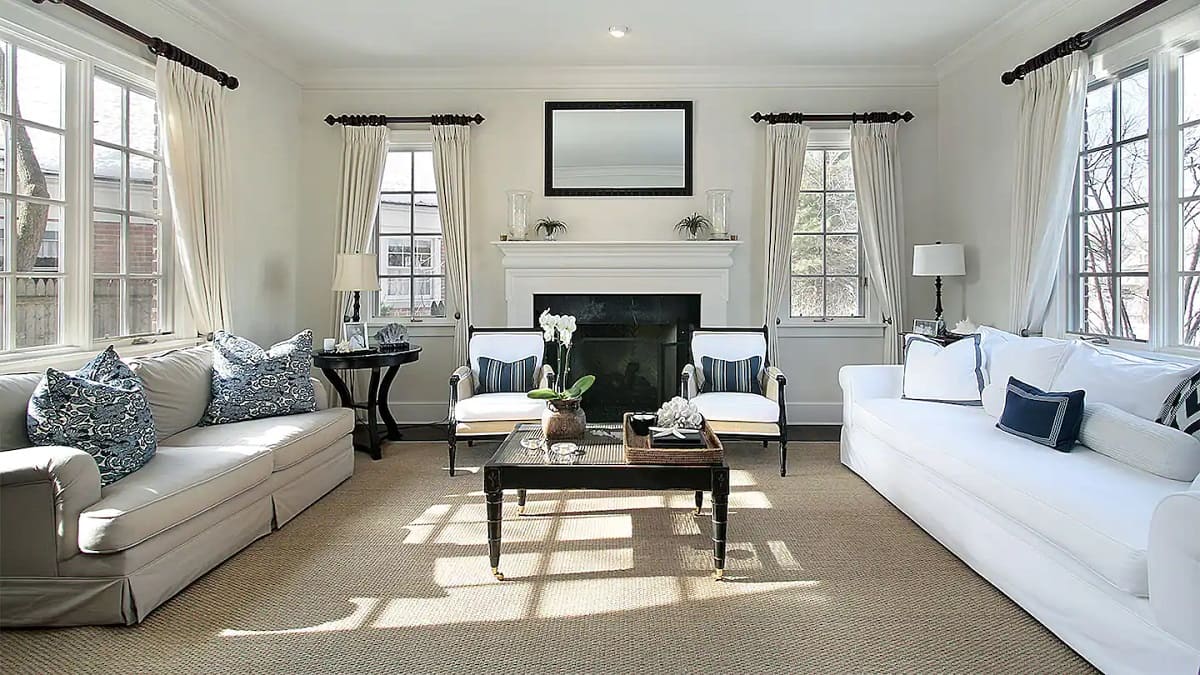
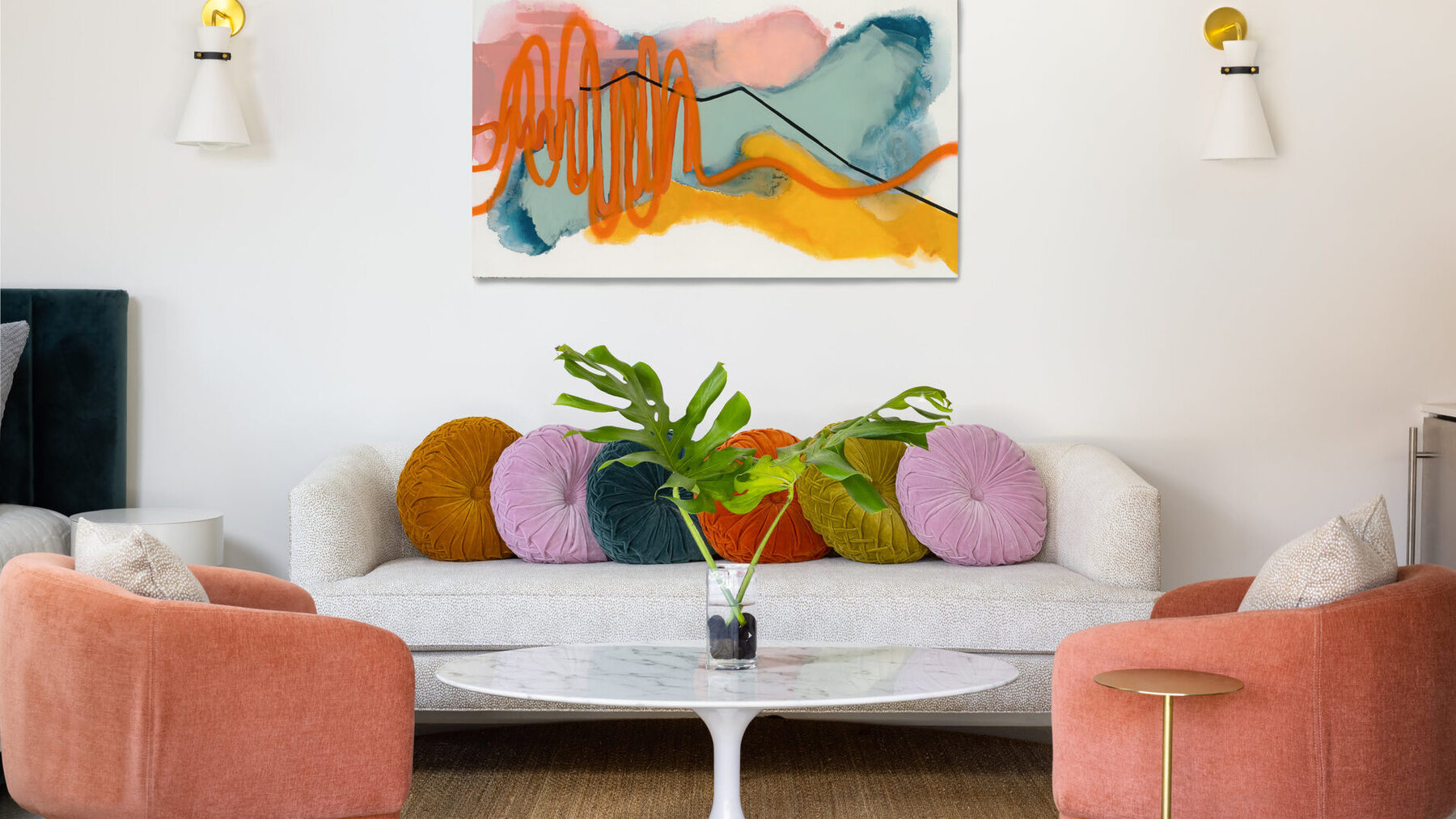

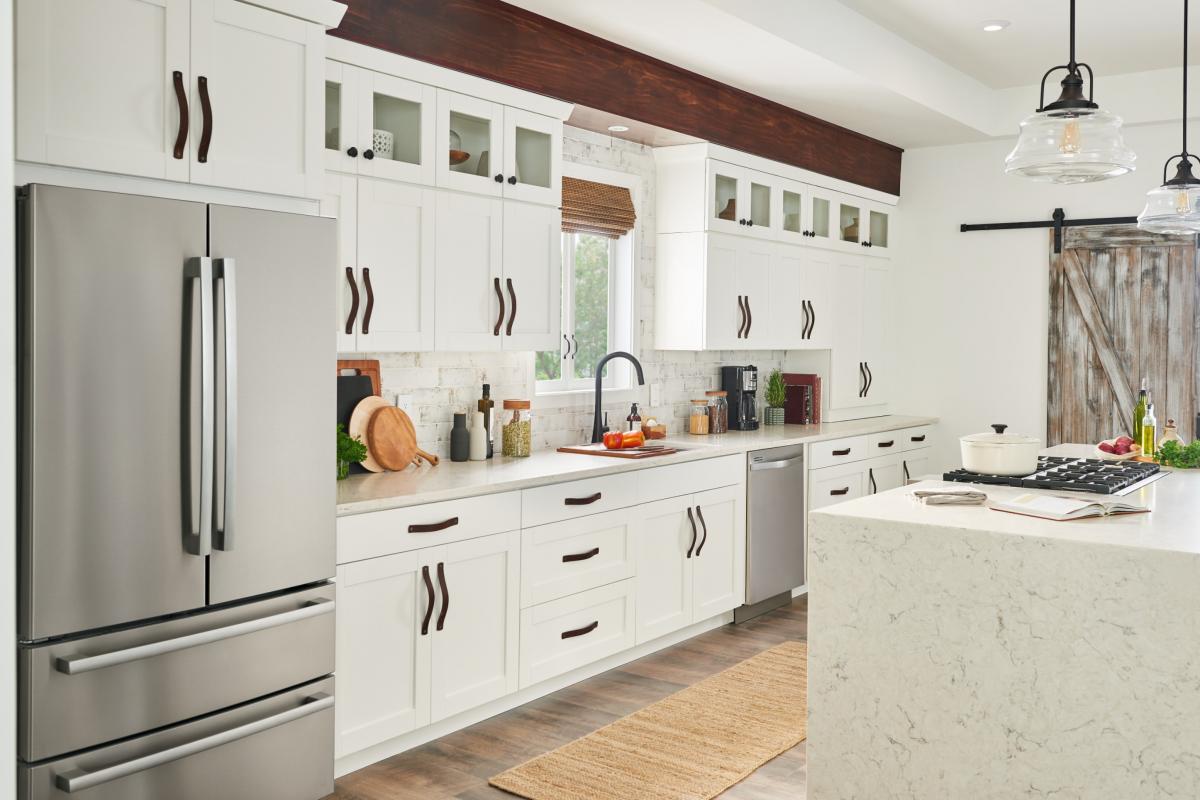
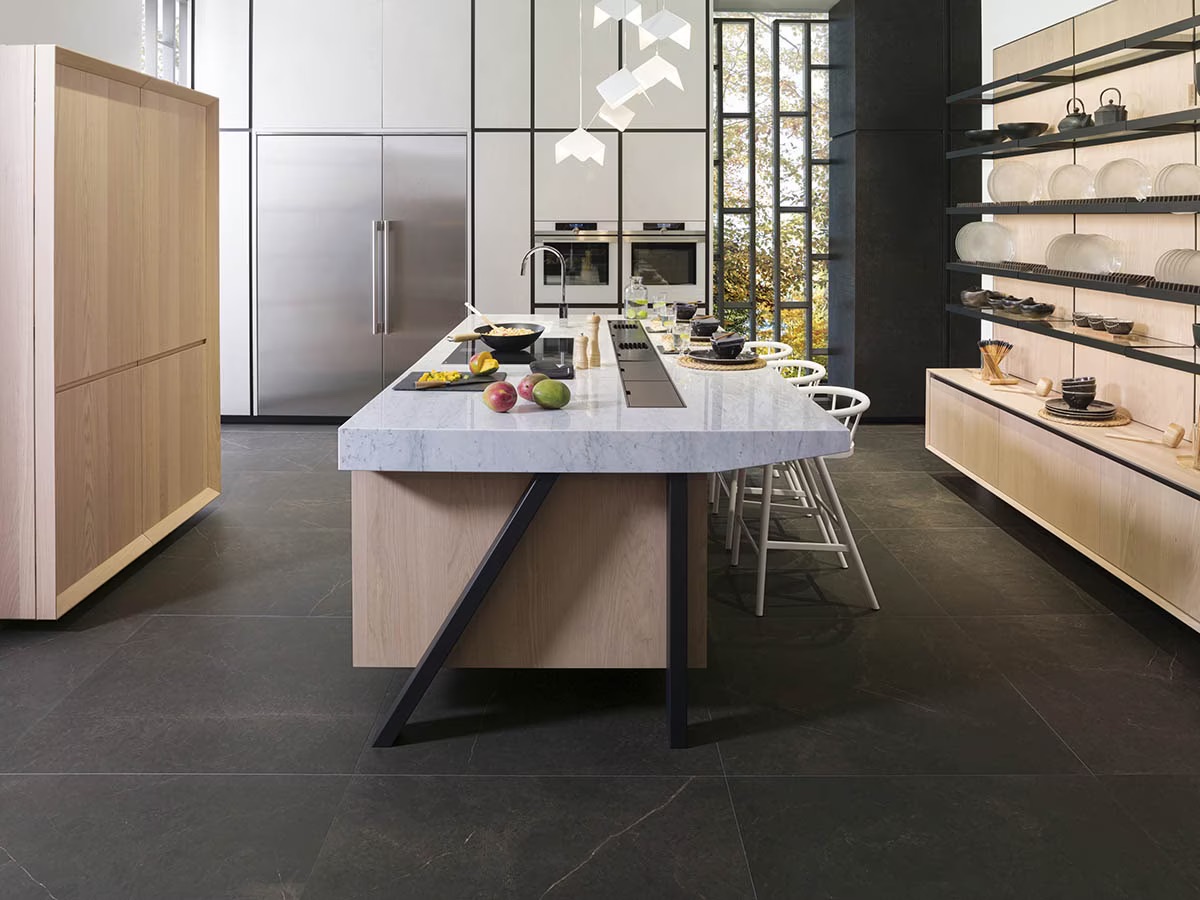
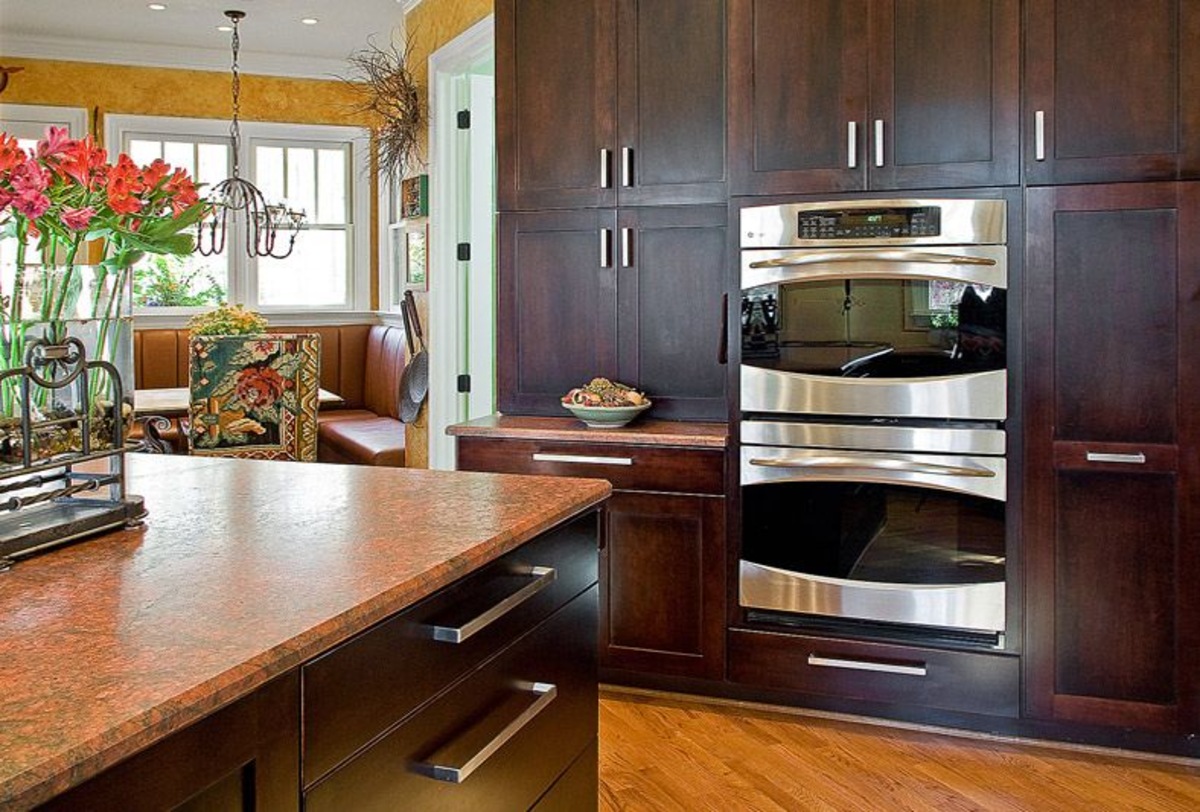
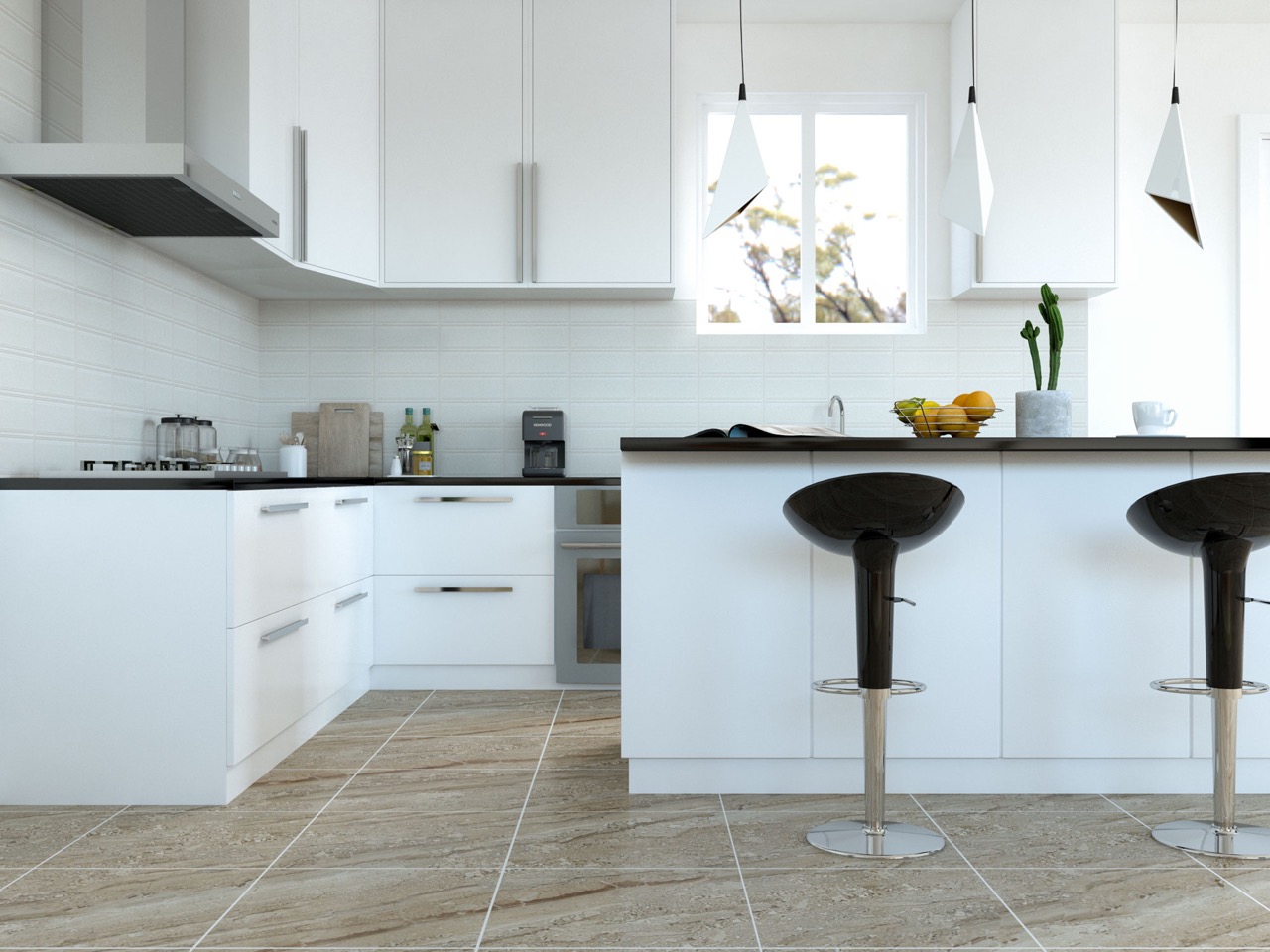
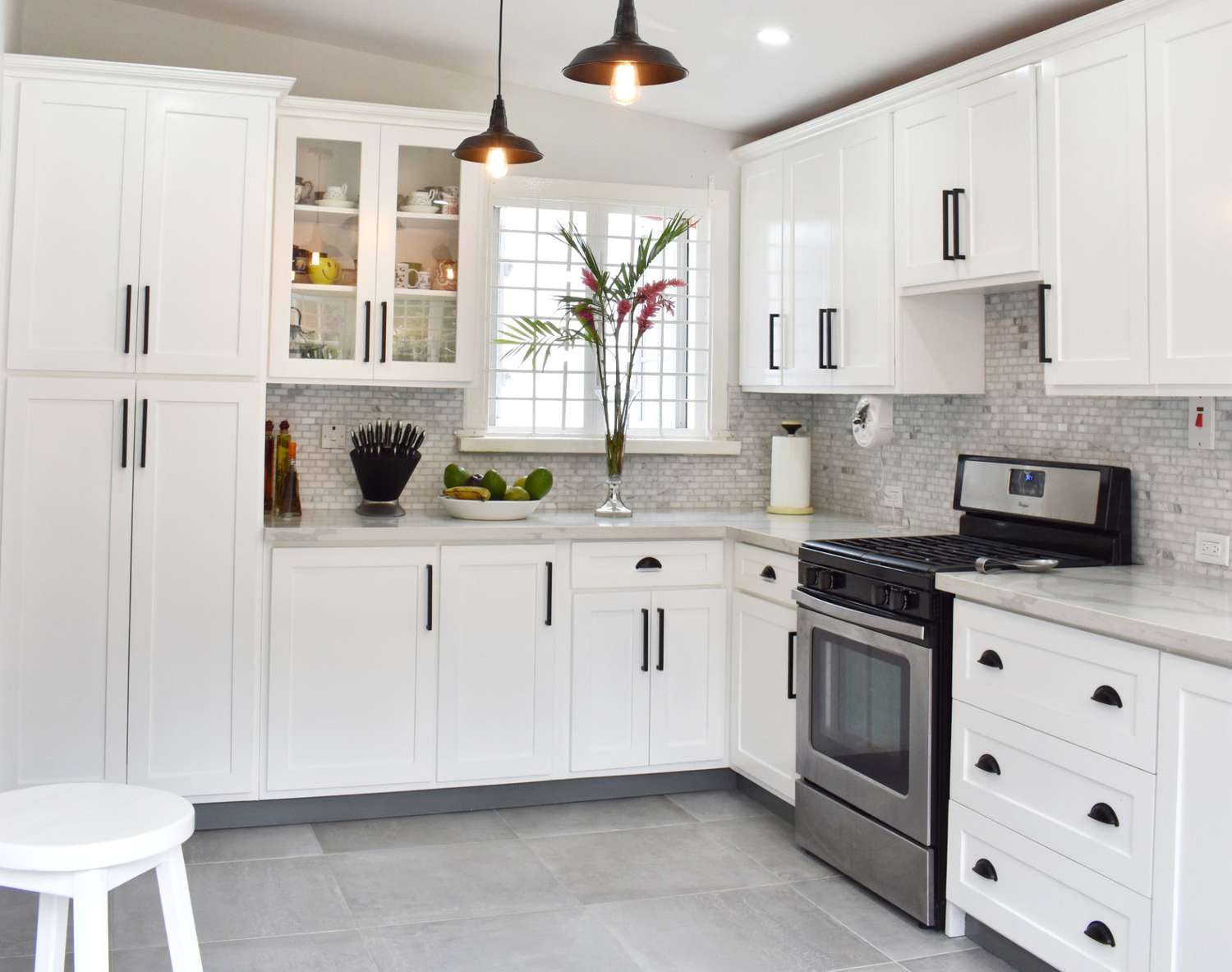
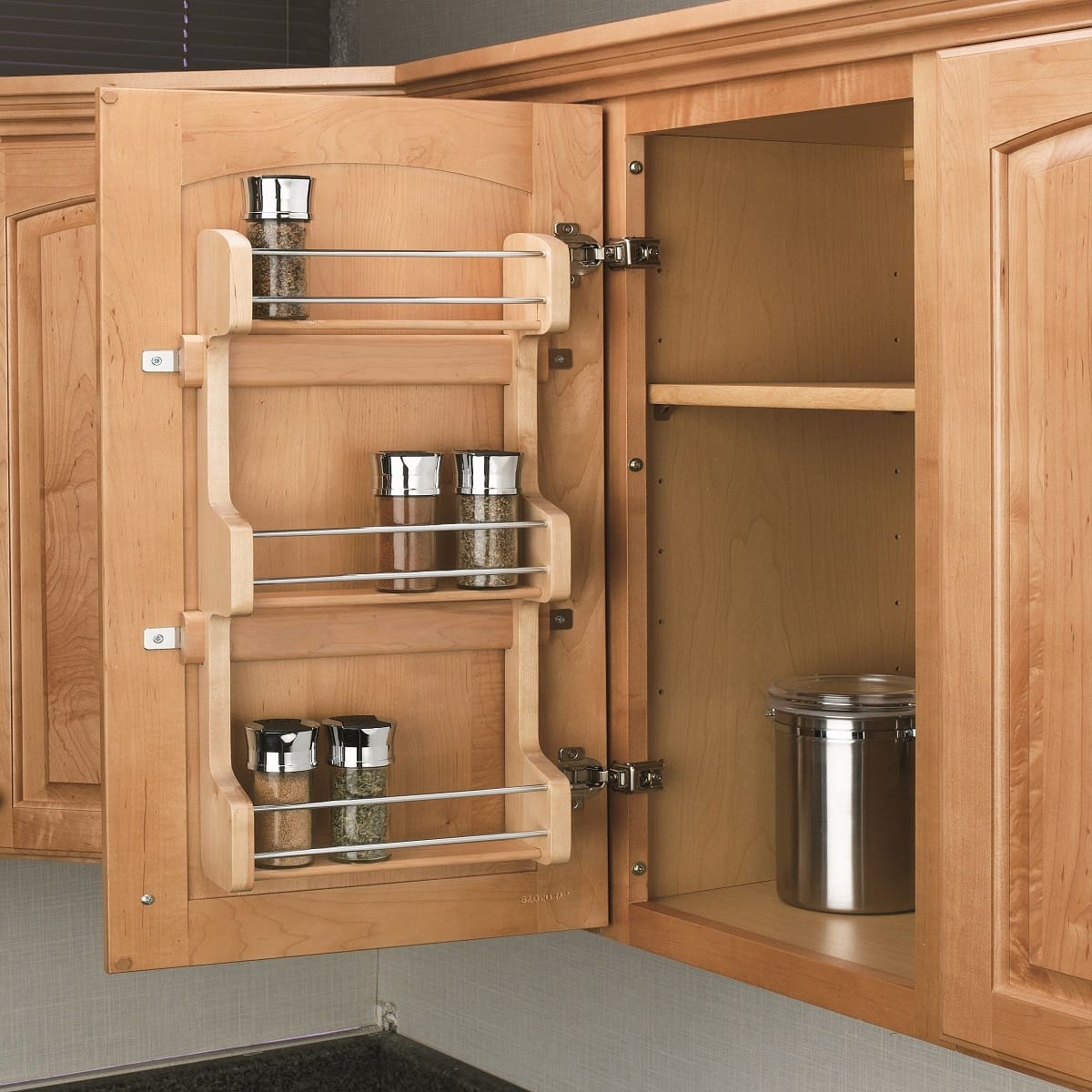
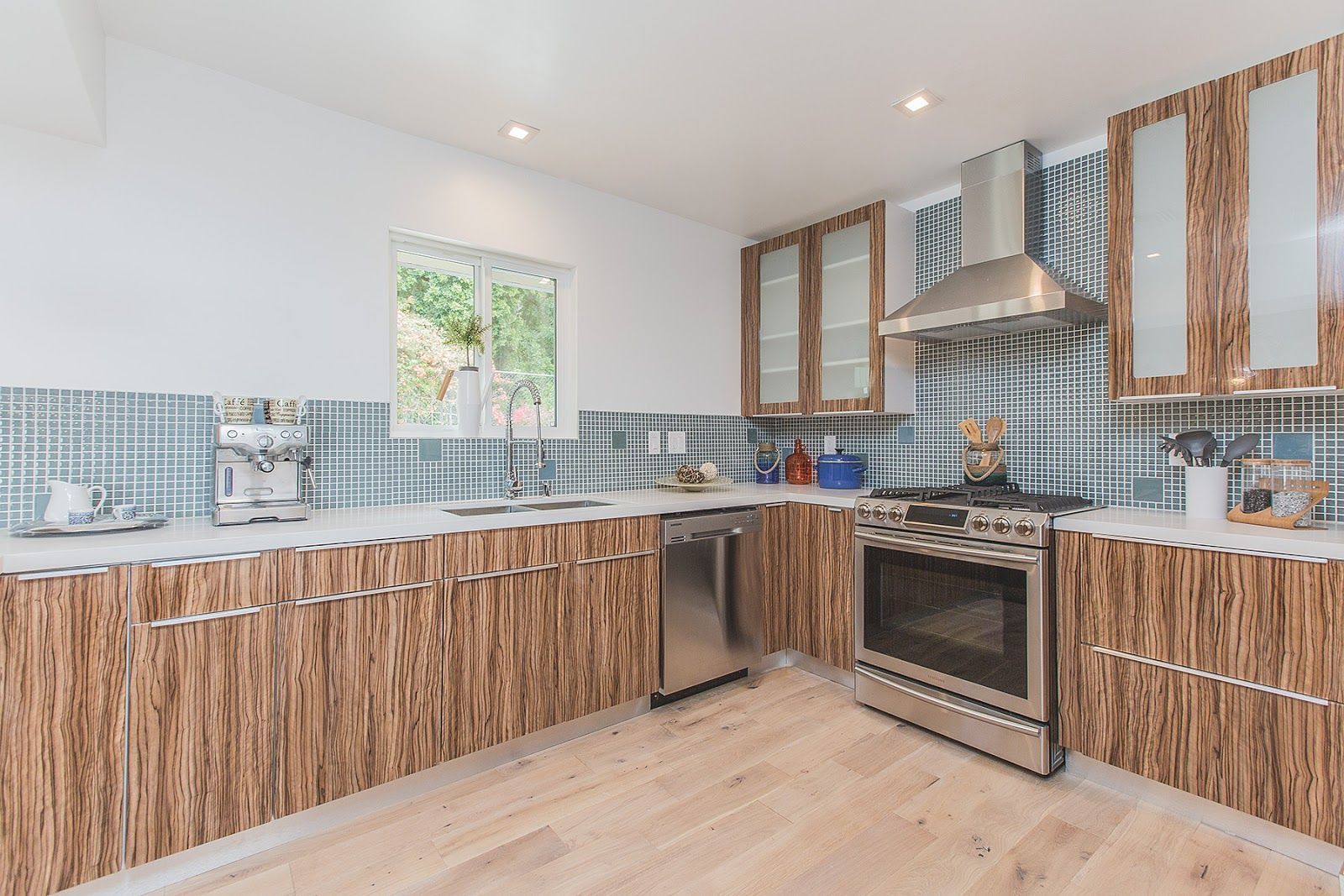
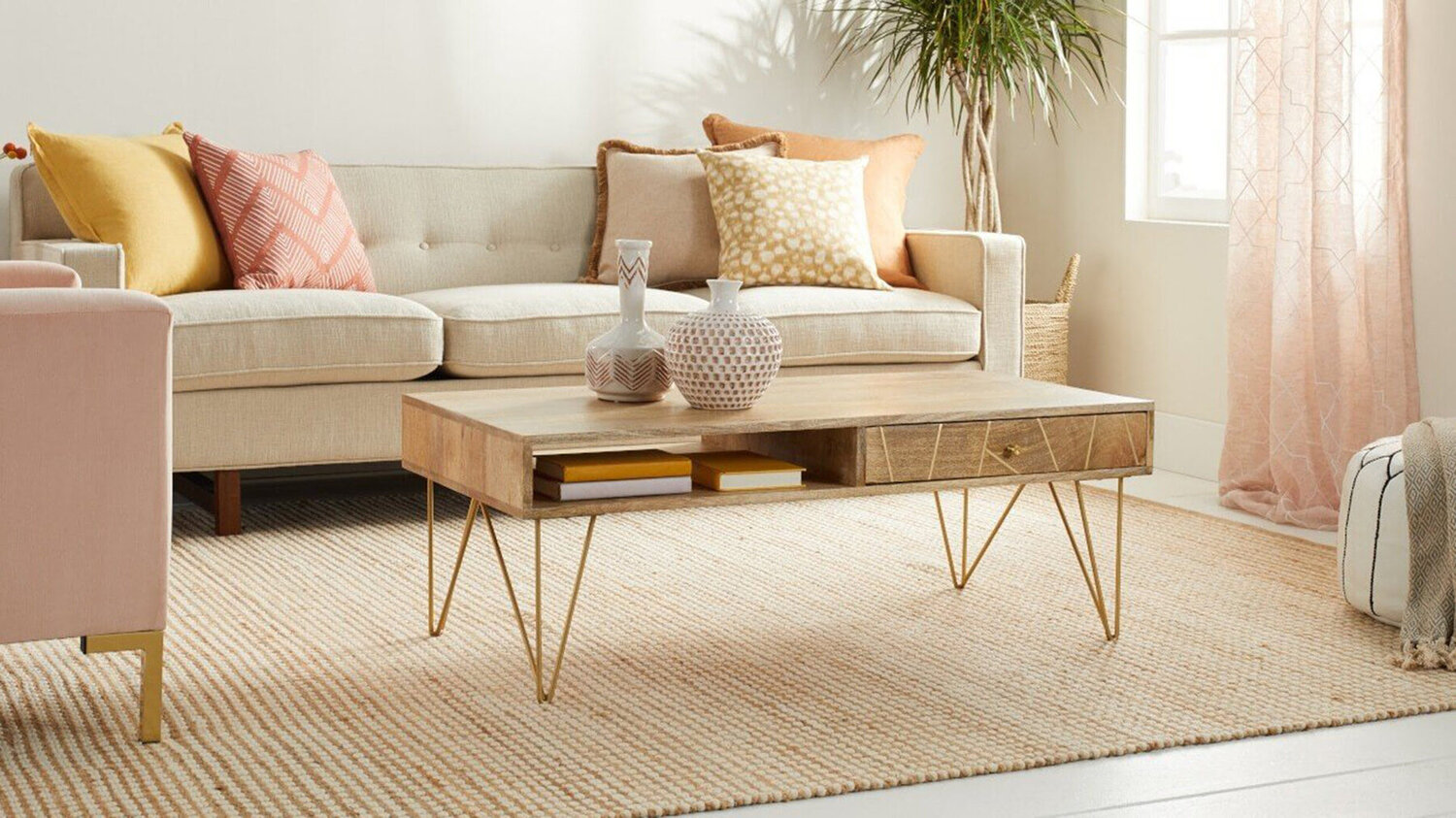
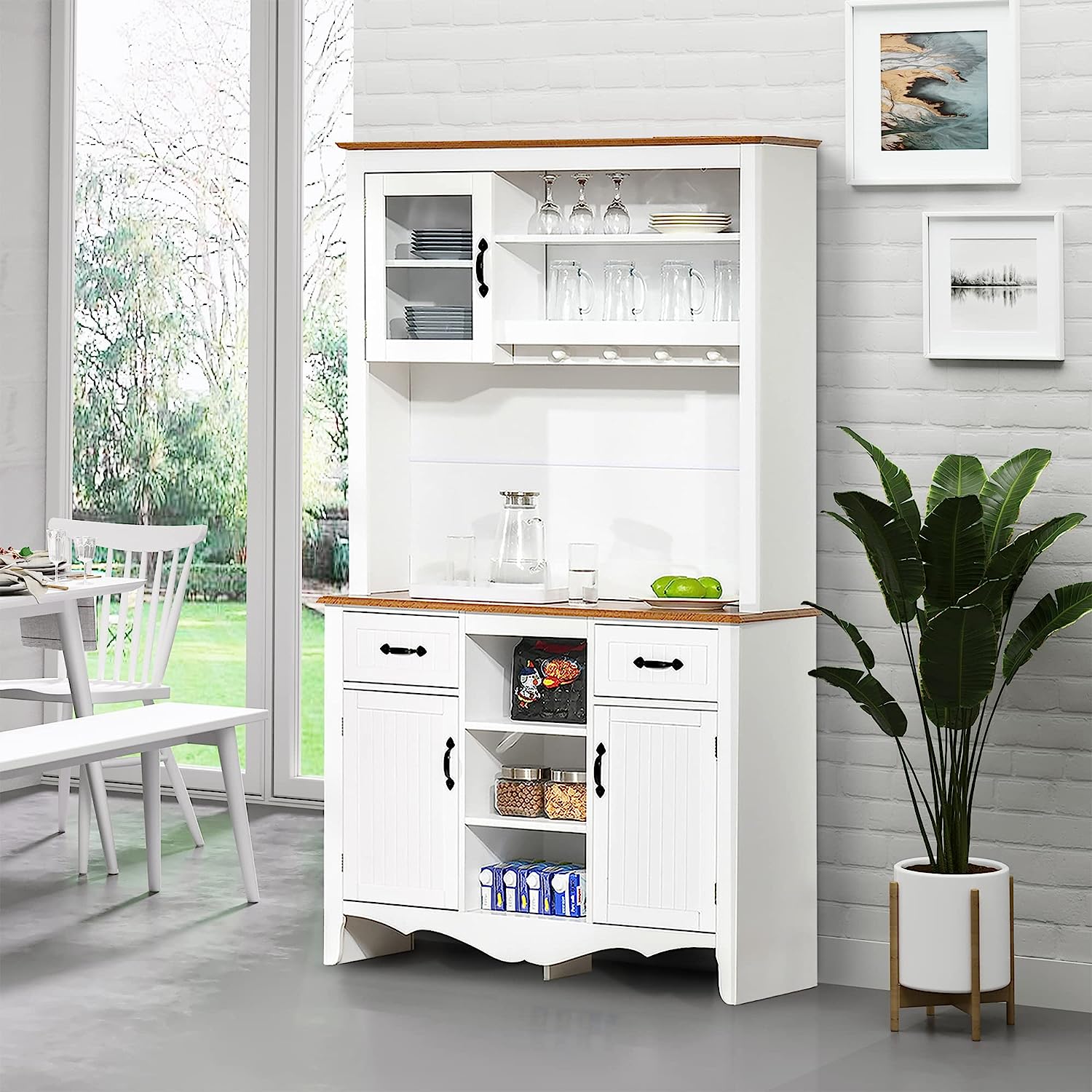
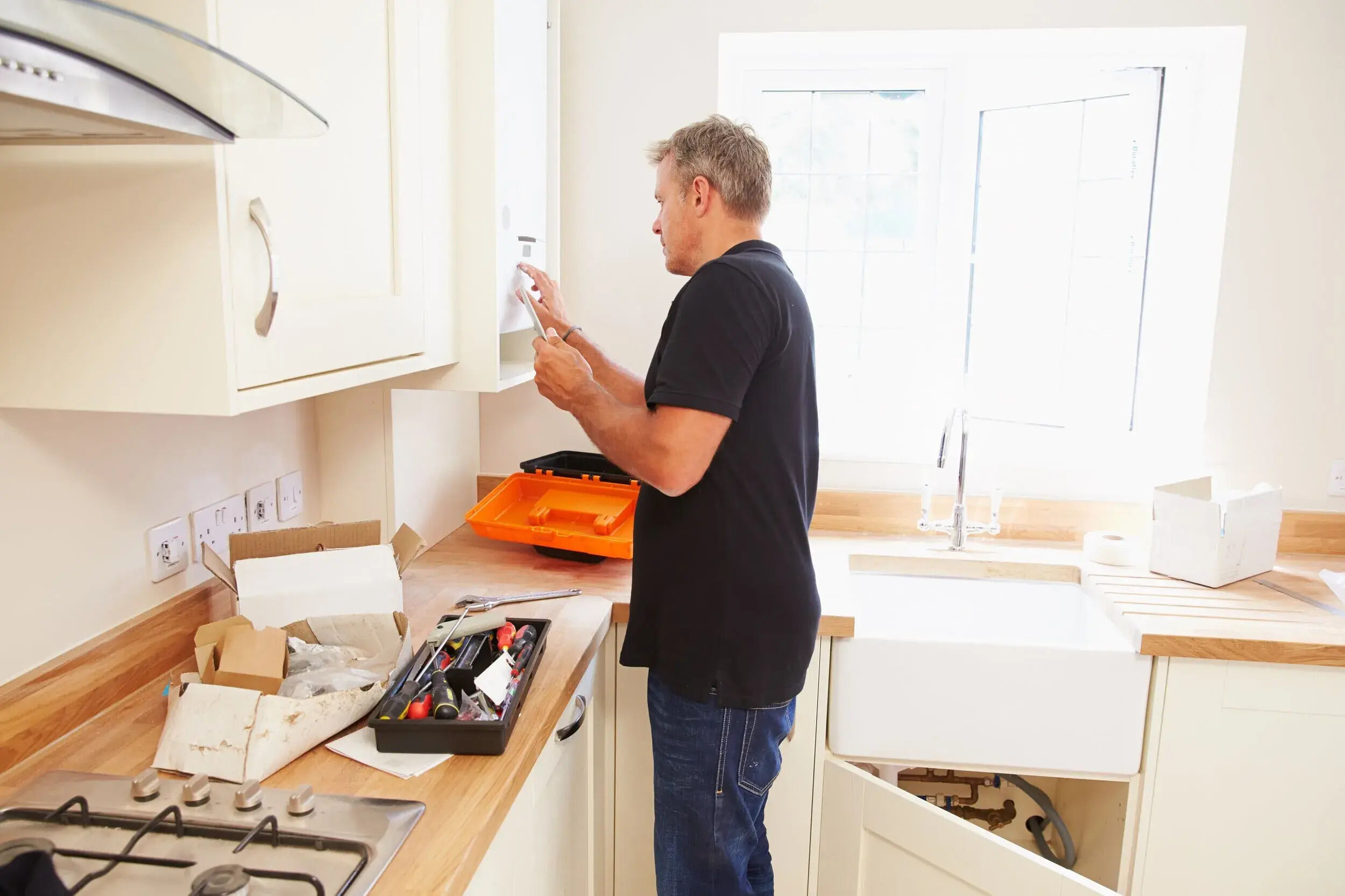
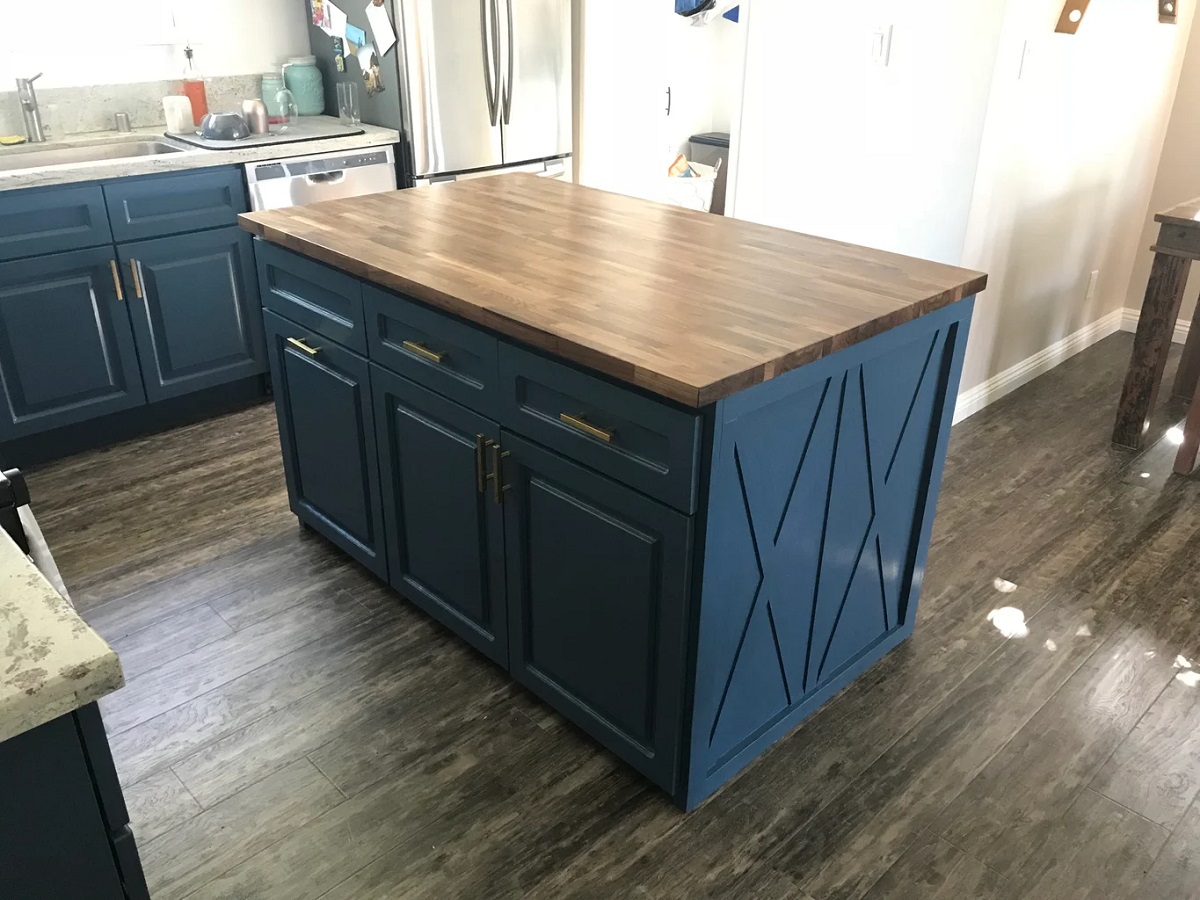

0 thoughts on “Should A Kitchen Floor Be Lighter Or Darker Than Cabinets?”